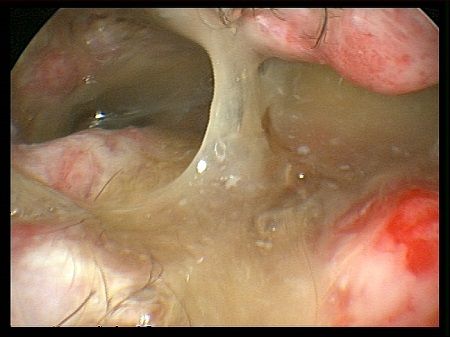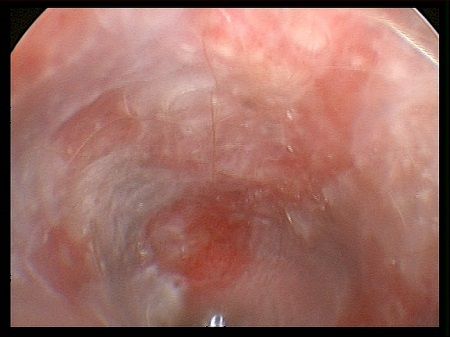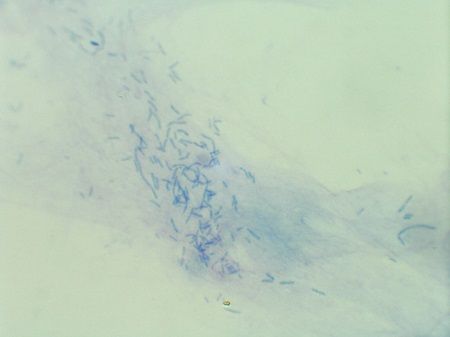Image Quiz: A recurrent, painful ear infection
Can you correctly identify the underlying invader in this dog's smelly, painful ear? Take this image quiz (sponsored by Bayer) and find out.
Max, a 10-year-old, 31-lb (14.1-kg) male neutered American cocker spaniel, was presented for evaluation of a chief complaint of a painful right ear that has had a malodourous discharge for the past two months. He has had a long history of recurrent otitis throughout his life. In the past, application of a topical ointment containing gentamicin sulfate, betamethasone valerate, and clotrimazole for a week or two cleared up both ears. This time, the right ear did not improve and continued to be a problem.
On physical and otoscopic examination, the right external ear demonstrated marked erythema with cobblestone hyperplasia along the entire vertical and horizontal canal. The canal contained purulent exudate (Figure 1) and ulcerated regions along the walls.

Figure 1. The dog's ear canals contained purulent exudate and ulcerated regions.
The tympanum could not be visualized because of the heavy debris, so the dog was anesthetized and tube irrigation and flushing of the right ear canal was performed. After flushing, the right ear canal demonstrated erythema, ulceration, and erosion (Figure 2). The left external ear canal appeared grossly normal and the tympanum was intact. Because the left ear was clinically normal, it was not flushed.

Figure 2. The left ear canal, after it was irrigated.
Cytologic samples were collected from both ears with a cotton-tipped applicator and rolled onto a glass slide and stained. The left ear sample demonstrated a small amount of ceruminous debris and occasional corneocytes, which were considered nonpathologic findings. The sample from the right ear revealed inflammatory infiltrate and organisms (Figure 3; oil immersion, 1000x magnification).

Figure 3. Cytology sample from the dog's right ear.
What is the most likely microorganism present?